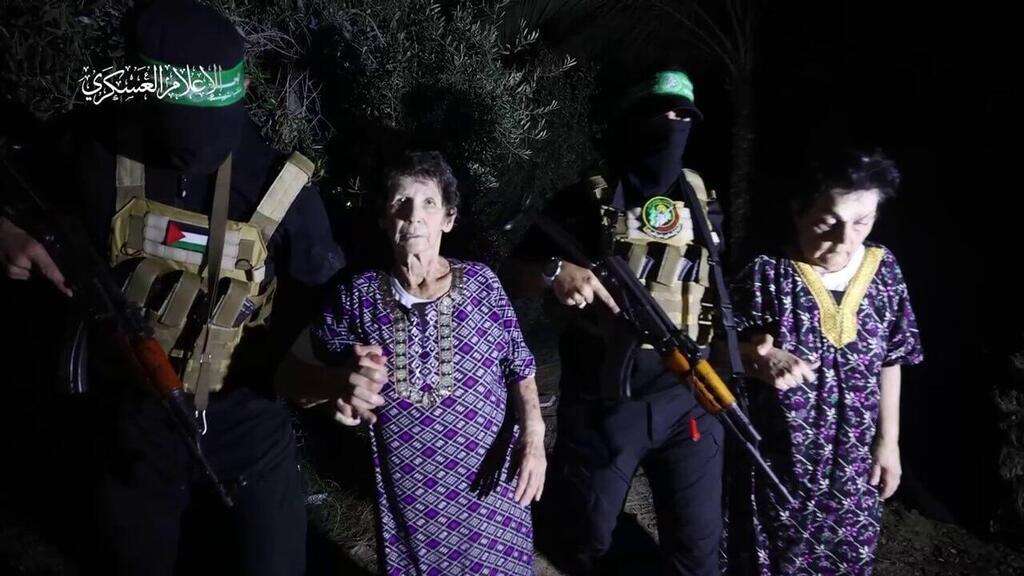The Attack perpetrated by the Hamas terror group on October 7 was inline with a scenario presented in document prepared in 2016, by then defense minister Avigdor Liberman, and given to Prime Minister Benjamin Netanyahu. It contained the defense establishment's evaluation that the Gaza ruling terror group plans to infiltrate Israel and occupy communities near the border with Gaza. They also intend to capture civilians and take them as hostages back to the Strip.
Read more:
According to the document, Hamas was working on a plan titled "The destruction of Israel by the year 2022 and the liberation of all Palestinian territories."
4 View gallery


Prime Minister Benjamin Netanyahu and then Defense Minister Avigdor Liberman
(Photo: Alex Kolomoisky )
Lieberman was alarmed by the security services account of Hamas's intent and brought it to the knowledge of Netanyahu and the chief of staff Gadi Eizenkot but according to him, they did not seem to treat it with the seriousness it deserved.
In a chillingly precise forecast, the horrifying terrorist onslaught that would occur seven years later was described. The document cautioned that "the decision to decline to launch a preemptive strike on Gaza after July 2017" would be a grave mistake with far-reaching consequences, potentially even more severe than the aftermath of the Yom Kippur War. The document highlighted the profound impact it could have on Israel's southern region, the mindset of its citizens, and Israel's image and standing in the region.
Hamas' intentions were explicitly detailed: "Hamas intends to escalate the next war into Israeli territory, mobilizing significant and highly skilled forces, including naval units, towards Israeli territory. This plan involves the capture of Israeli communities (possibly even multiple communities) in the Gaza periphery and the abduction of civilians. Beyond the physical harm to individuals, these actions will have a profound impact on the psyche and morale of Israeli citizens."
In terms of tactical breadth, there was also a reference to an integrated multi-front conflict scenario: "Hamas envisions the next engagement with Israel to be a multi-front one, involving the establishment of additional arenas in the Gaza Strip (Lebanon, Syria, Jordan, Sinai), and even against Jewish targets worldwide." In this context, the document stressed, "in the upcoming conflict within the framework of this broad multi-front operation, Hamas will actively and significantly participate externally."
Concerning the security barrier against Gaza, residents of the periphery have frequently voiced their dissatisfaction, stating that it does not provide adequate protection. The assessment of the situation indicated that "the defensive obstacle being constructed on the Gaza border, with its various components and capabilities, is indeed a significant element in the current security strategy vis-a-vis Gaza. However, it cannot serve as a standalone strategy. Modern history and past precedents demonstrate that barriers and fortifications do not prevent conflict and do not guarantee peace and security."
Liberman also stressed the importance of not waiting for a perfected intelligence grasp in dealing with security threats. He warned that if Israel postponed its actions until achieving complete intelligence accessibility and the establishment of a security fence, it would risk losing these advantages when confronting Hamas in the interim. This perspective was shared in 2016.
The document's conclusion included a stark warning that, as we find ourselves three weeks into the war, was proven to be true: "Failure to take Israeli initiative by mid-2017 could be a grave error, possibly leading Israel into a challenging strategic predicament. Such a scenario might result in an unforeseen deterioration, where Israel will no longer be able to contain the military arm of Hamas, or, even worse, Hamas may choose to engage in conflict at a time that suits its interests. I believe that the ramifications of such a course of action by Hamas could push us further away from our goals, in certain respects even more so than the outcomes of the Yom Kippur War."





